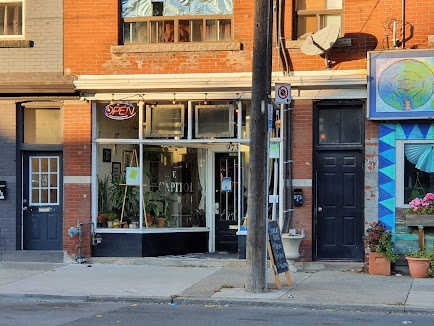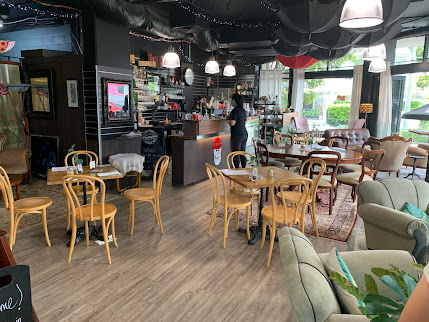 |
| A violence interruption neighborhood in Syracuse during our SafeGrowth presentations |
by Gregory Saville
A number of years ago I watched an impressive problem-oriented policing presentation about a homicide reduction program in Boston that cut murders in half in a single year. Officially called Operation Ceasefire, it became known as the Boston Miracle and the magician behind it was David Kennedy, one of the brightest criminologists I know, professor of criminal justice at John Jay College in New York.
Ceasefire has evolved into what is now called the CVI method of violence and homicide reduction – Community Violence Intervention. There are two forms of CVI:
- The first version of CVI is the one I saw from Boston. It goes by a number of names (commonly the “call-in” method where police call-in offenders for a meeting) and it is run through the Center National Network for Safe Communities.
"Community members with moral authority over group members deliver a credible moral message against violence. Law enforcement puts groups on prior notice about the consequences of further group-involved violence… support and outreach providers make a genuine offer of help for those who want it. A central method of communication is the call-in, a face-to-face meeting between group members and the strategy’s partners."
- The other version of CVI tends to avoid the justice system, but rather taps into the street knowledge of former street offenders.
The Cure Violence, also known as The Interrupters, is like the Guardian Angels on steroids. We have blogged on it before. It is described in the 2011 film called The Interrupters and it shows how “Interrupters” are hired directly from the community, sometimes people with a history of gang affiliation. When information arises indicating a potential outbreak of gang conflict, Interrupters visit the neighborhoods and speak directly to those involved. They describe of their own street experience and the consequences of violence and shootings. Their success rate is impressive.
Cure Violence was the brainchild of Gary Slutkin, an epidemiologist from Chicago.
 |
| There are better ways to prevent violence than after-the-fact arrest |
Both styles of CVI programs are visiting cities across the U.S. and now Europe and they have an impressive evaluation history. We could certainly use those CVI strategies to tamp down violence in some of our communities in the first few months of our capacity-building work.
THE NECESSARY INGREDIENT
However, all CVI programs require one essential element in order to function – existing crime!
That means that, whether police call-in suspected gang members, or if Interrupters visit a potential offender for a shooting, CVI practitioners must already know of a crime underway or about to occur. And these pending events obviously do not happen in a vacuum, they occur in high crime areas or with known perpetrators of violence, shootings and gangs.
In other words, the social, economic, and psychological conditions that led to those risky moments were already in place long before CVI practitioners arrived. There is nothing wrong with preventing violence and shootings. But there is little evidence that intervening with a small group of offenders will do anything to sustainably transform the neighborhood conditions that led to their criminality in the first place. They might get some job offers, training, or perhaps social support for drug addiction. But what about the economic, social, and psychological conditions in the neighborhood where they and their families reside?
If you tamp down the fireworks, do you address how those fireworks started in the first place so they don’t start again? One published long-term evaluation of the Ceasefire approach concluded “Boston has been challenged to sustain the implementation of the Ceasefire strategy over extended time periods. High profile replications of the Boston approach has experienced similar challenges.”
What can be done to transform the long-term livability in such places that breed violence in the first place?
 |
| Whac-a-mole is a circus tabletop game from Japan - photo Creative Commons |
WHAC-A-MOLE
It is like going to the circus and playing the game called ‘whac-a-mole’.
The whac-a-mole game is played on a tabletop with a number of holes filled with plastic moles. The moles randomly pop up and the player whacks each one with a plastic hammer as fast as possible to gain points. The player never knows which mole will pop up, why they pop up, or how to keep them down, other than smashing them with the hammer as fast as they can.
Prevention programs like CVI require an offender, or offenders, to whack (to deliver CVI programming), but CVI programs have little to say about the root causes why they are violent, why they deal drugs, or from where their criminality arises. Other than individualized programs to help each offender (an important part of prevention, to be sure), CVI programs are not designed to transform the neighborhood so crime-causing conditions no longer create a breed of next-generation offenders.
 |
| SafeGrowth addresses many pieces of neighborhood livability leading to crime |
THE DIFFERENCE
That is what SafeGrowth does. By combining 1st, 2nd, and now 3rd Generation CPTED, we help residents rebuild troubled neighborhoods and attack crime at the roots where it grows. SafeGrowth is less about whacking moles, and more about the social ecology and cohesion of a community. CVI is attractive because it works quickly. SafeGrowth takes time.
Both strategies are important. But without digging at the roots, you hack at the branches and do not fundamentally change neighborhoods where the seeds of crime are planted. We describe this work in SafeGrowth: Building Neighborhoods of Safety and Livability, and in scholarly articles on neighborhoods where we cut crime from New Orleans to Toronto.
We need programs like CVI for effective alternatives to ineffective arrest strategies. But we also need neighborhood transformation programs, like SafeGrowth, to sustain early successes over the long term.
Otherwise, we find ourselves back to where we started, perhaps one reason the decades-long crime declines are now reversing in far too many cities!





